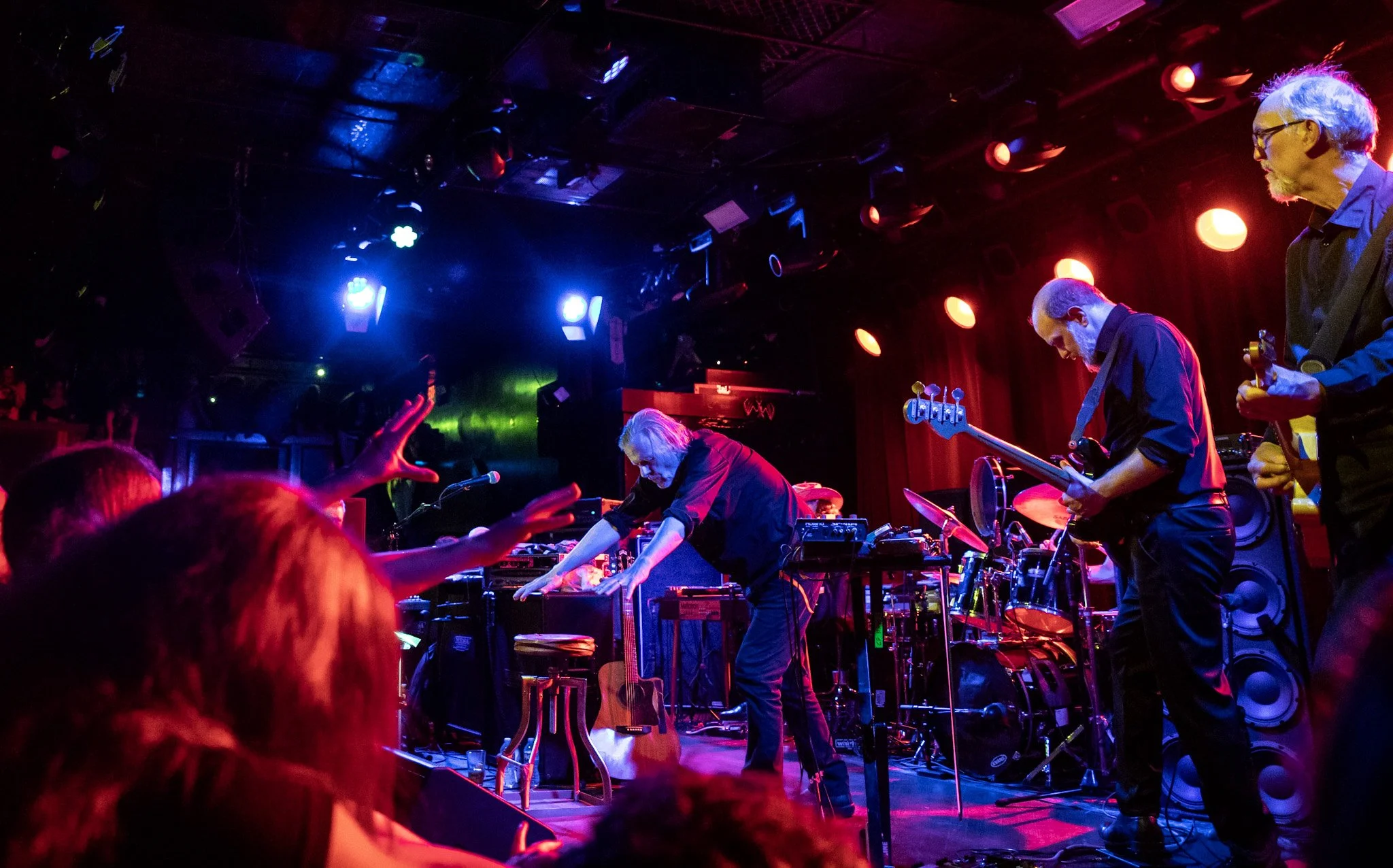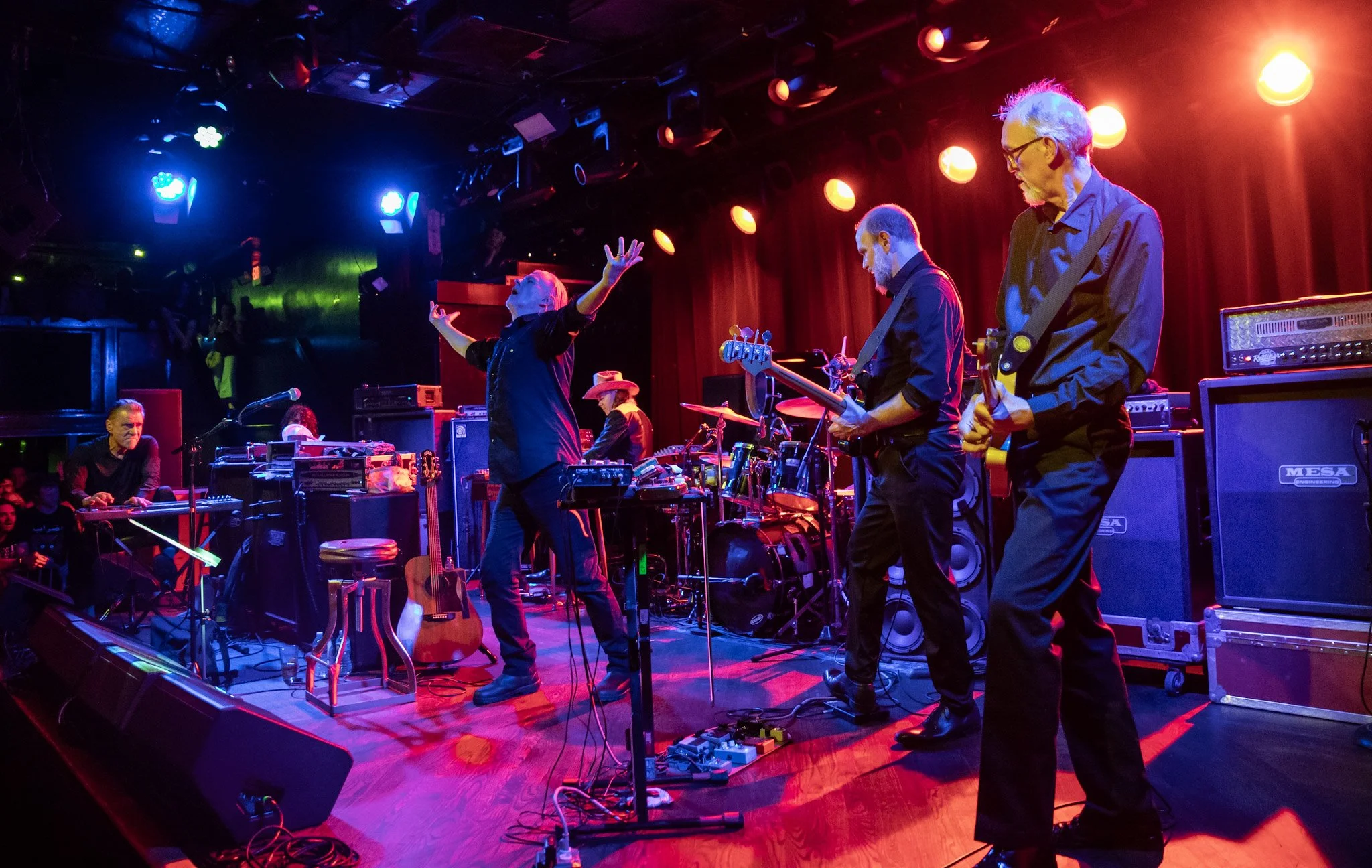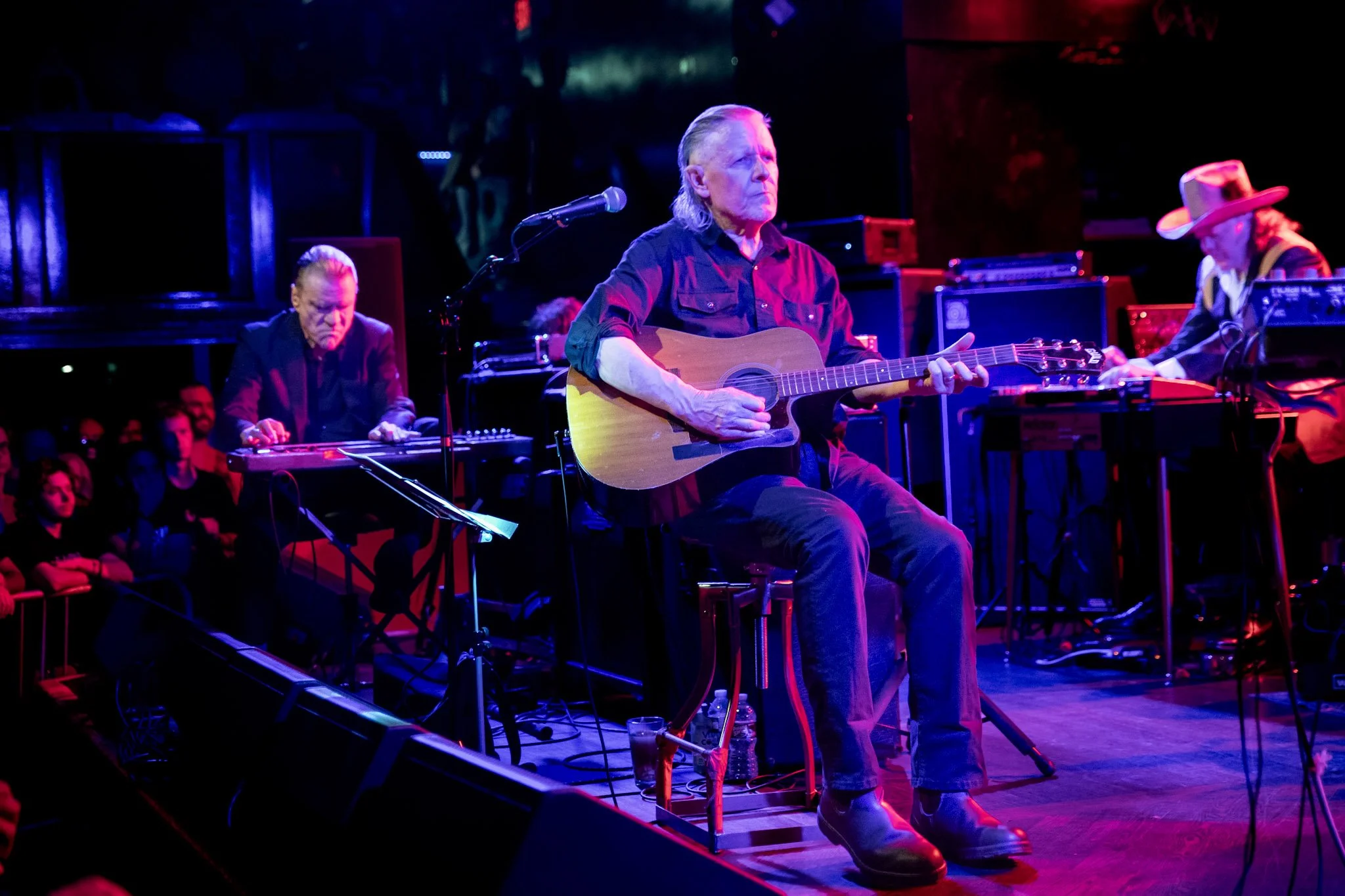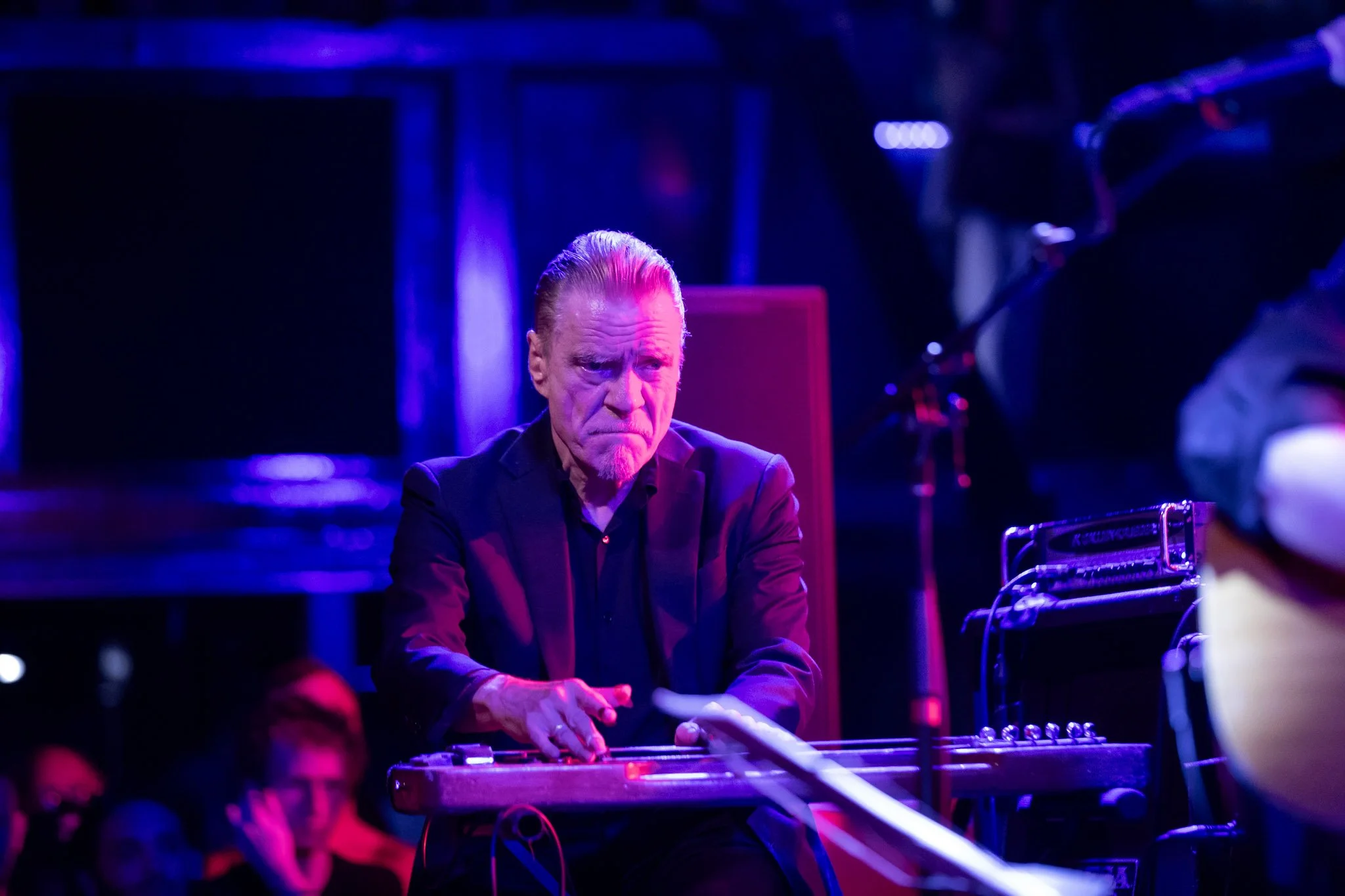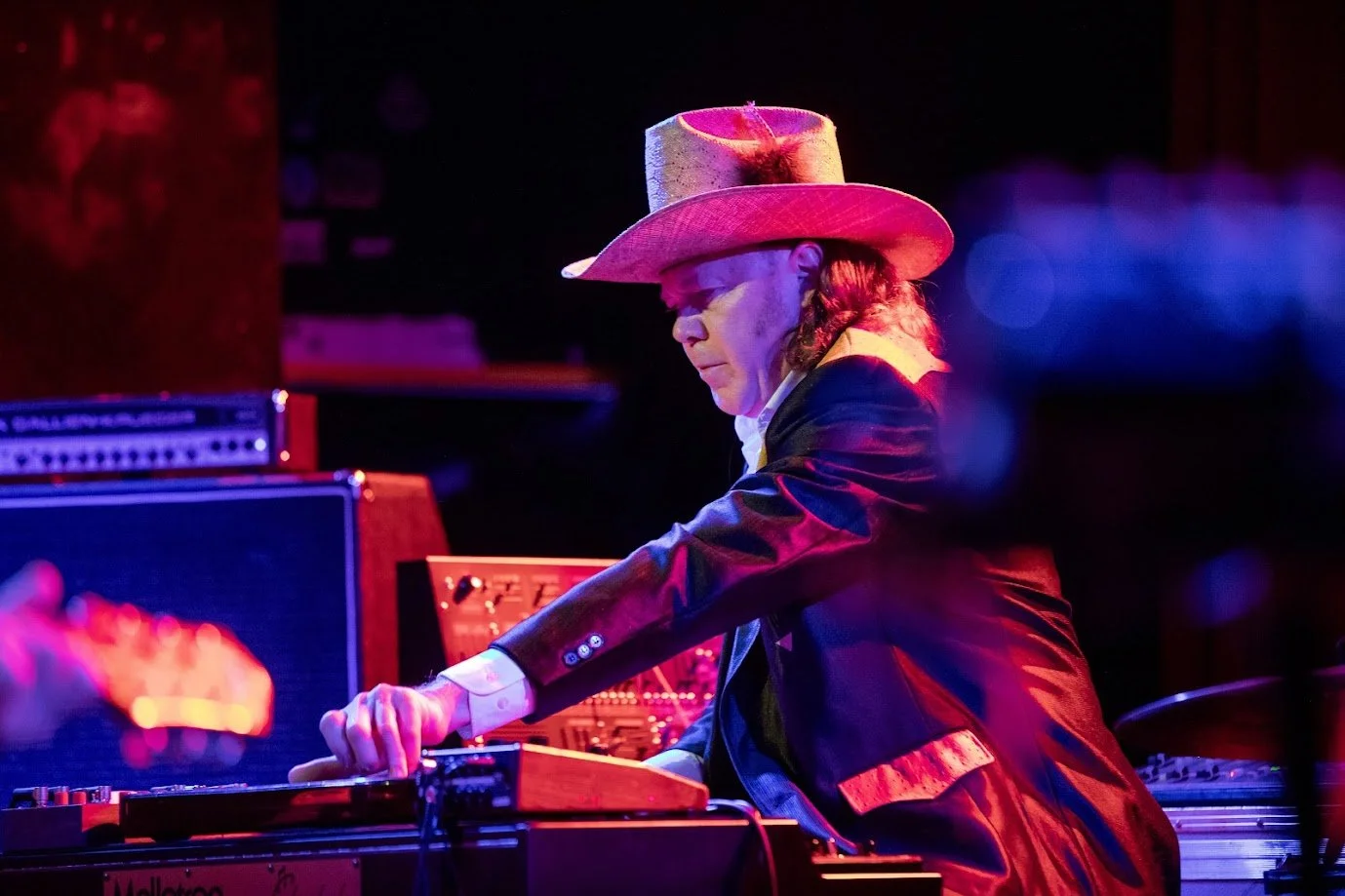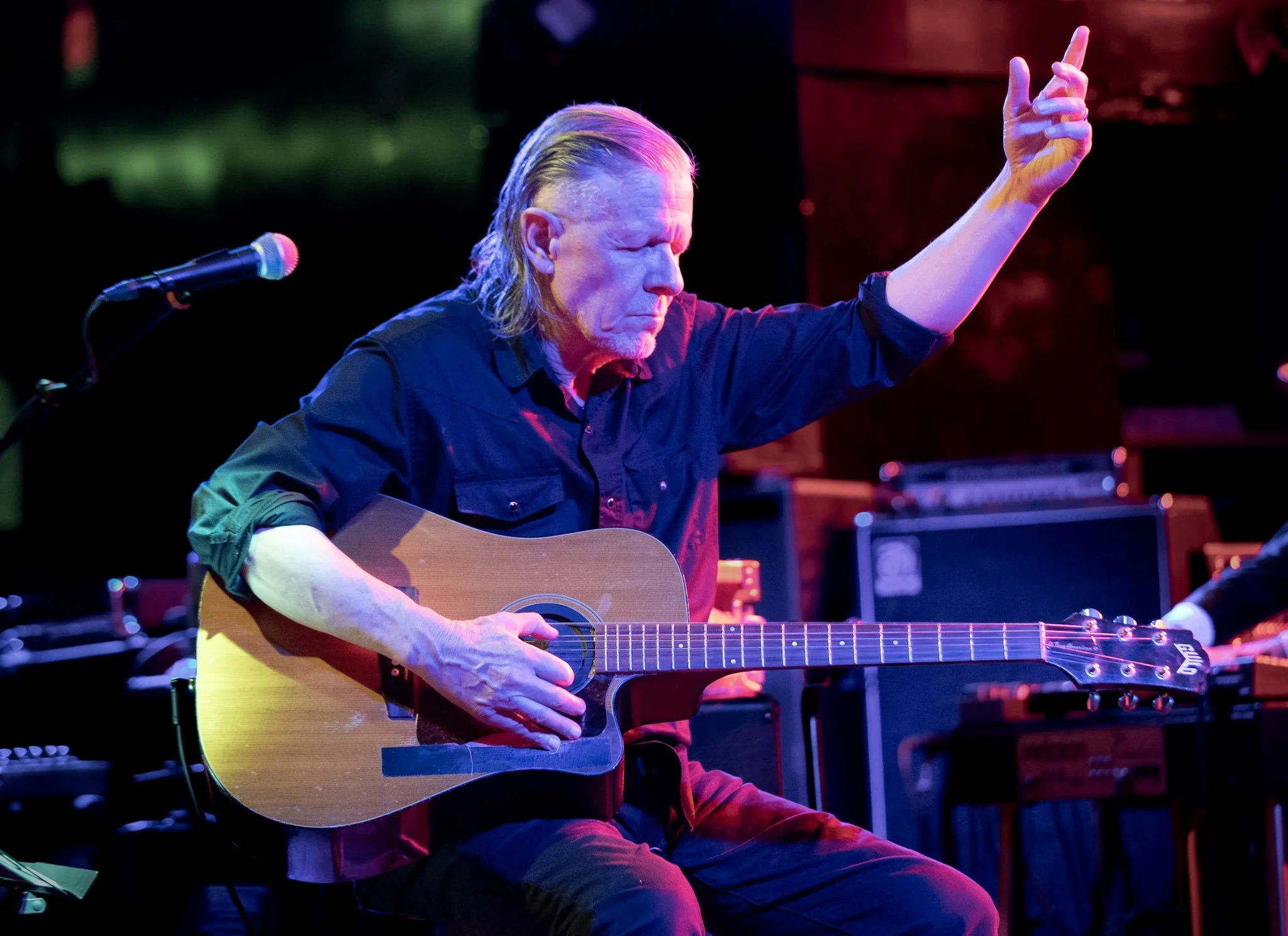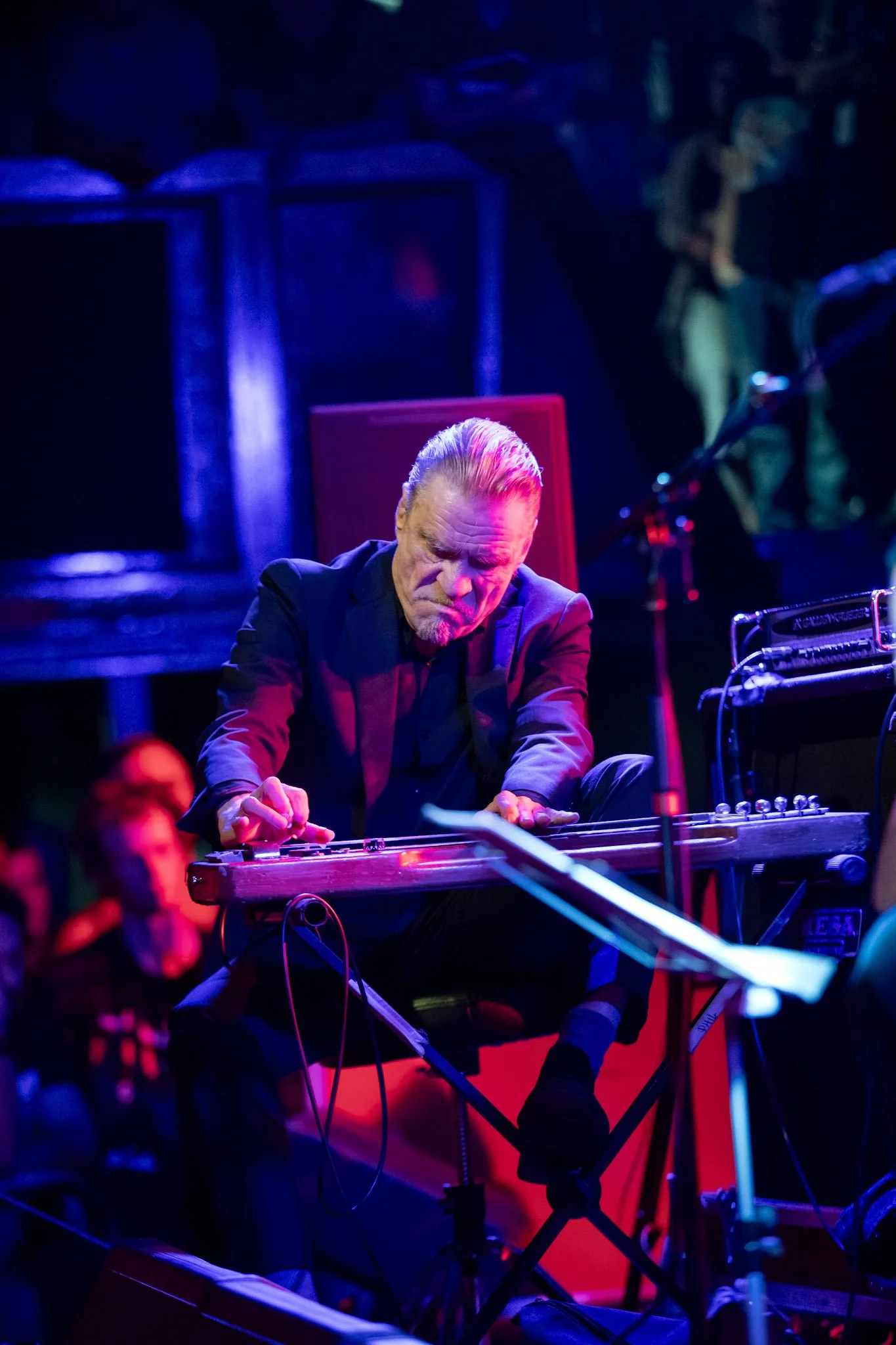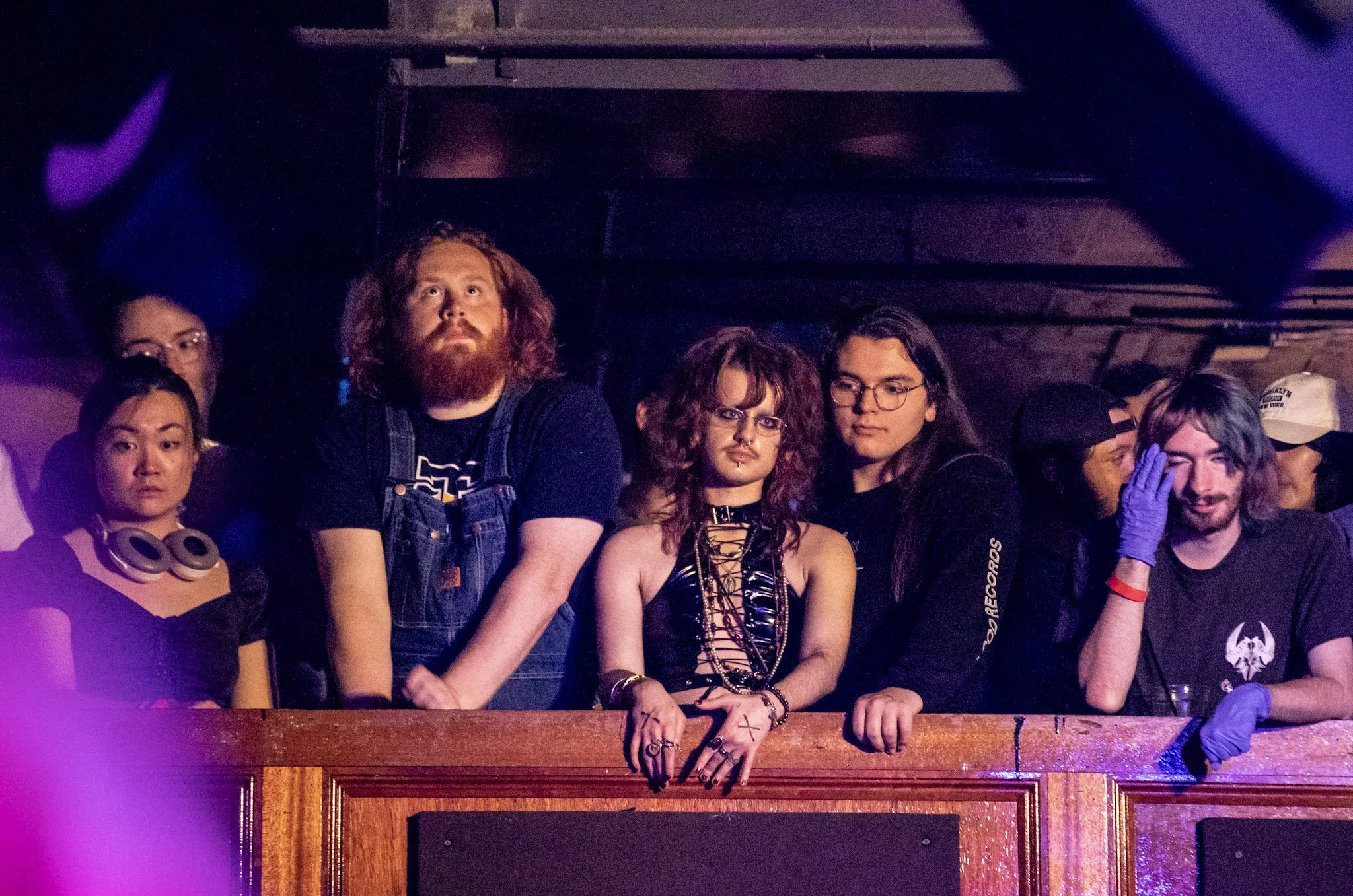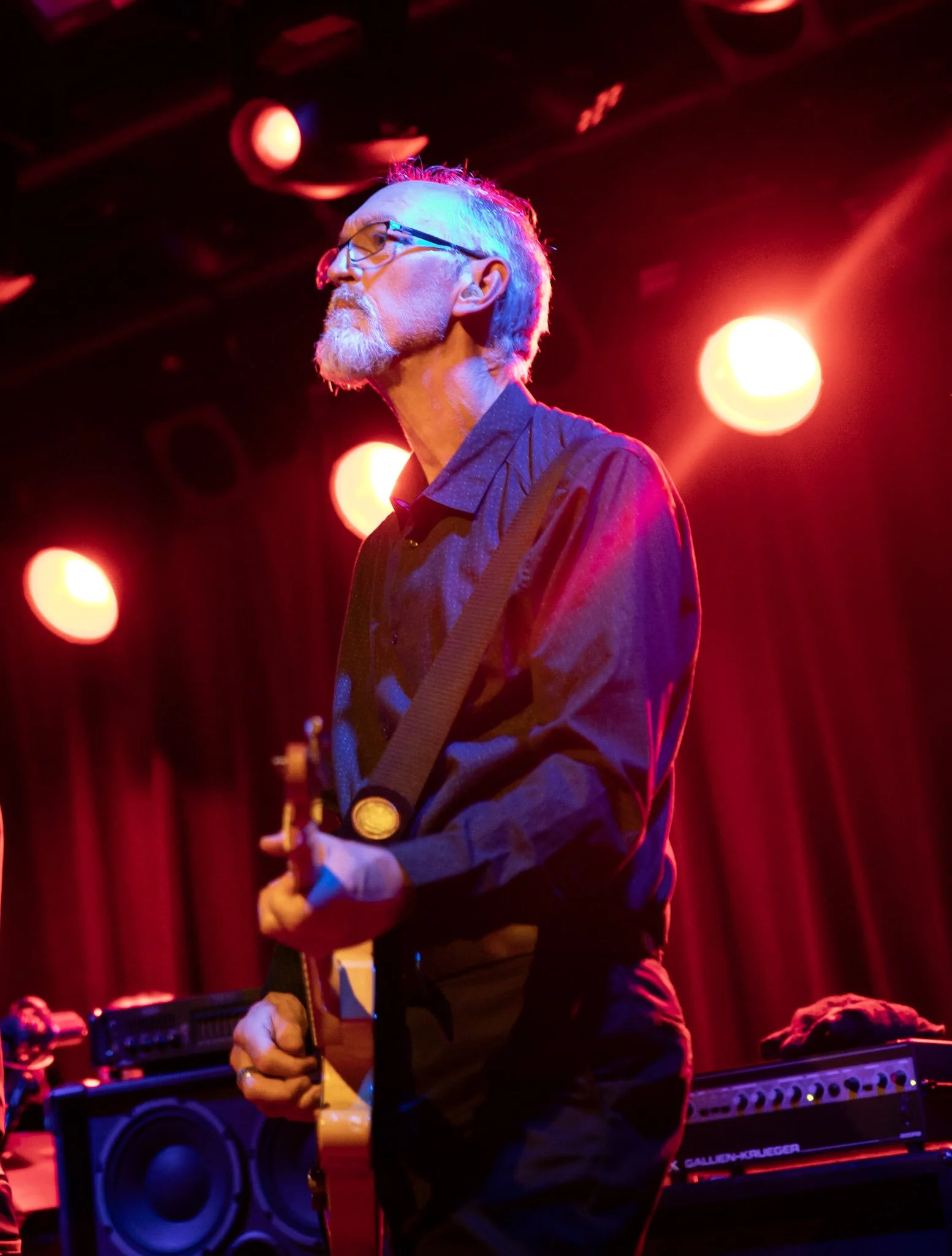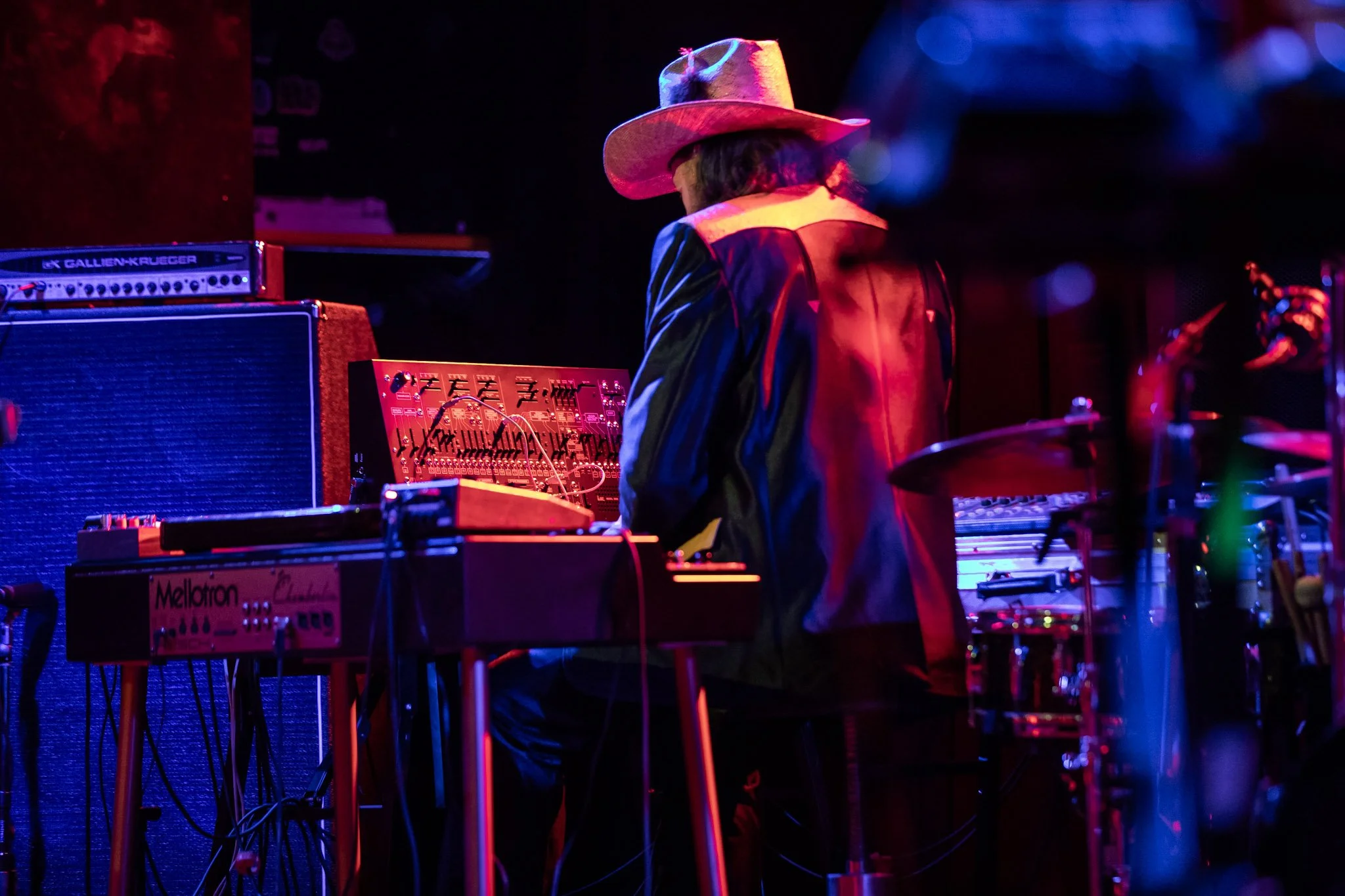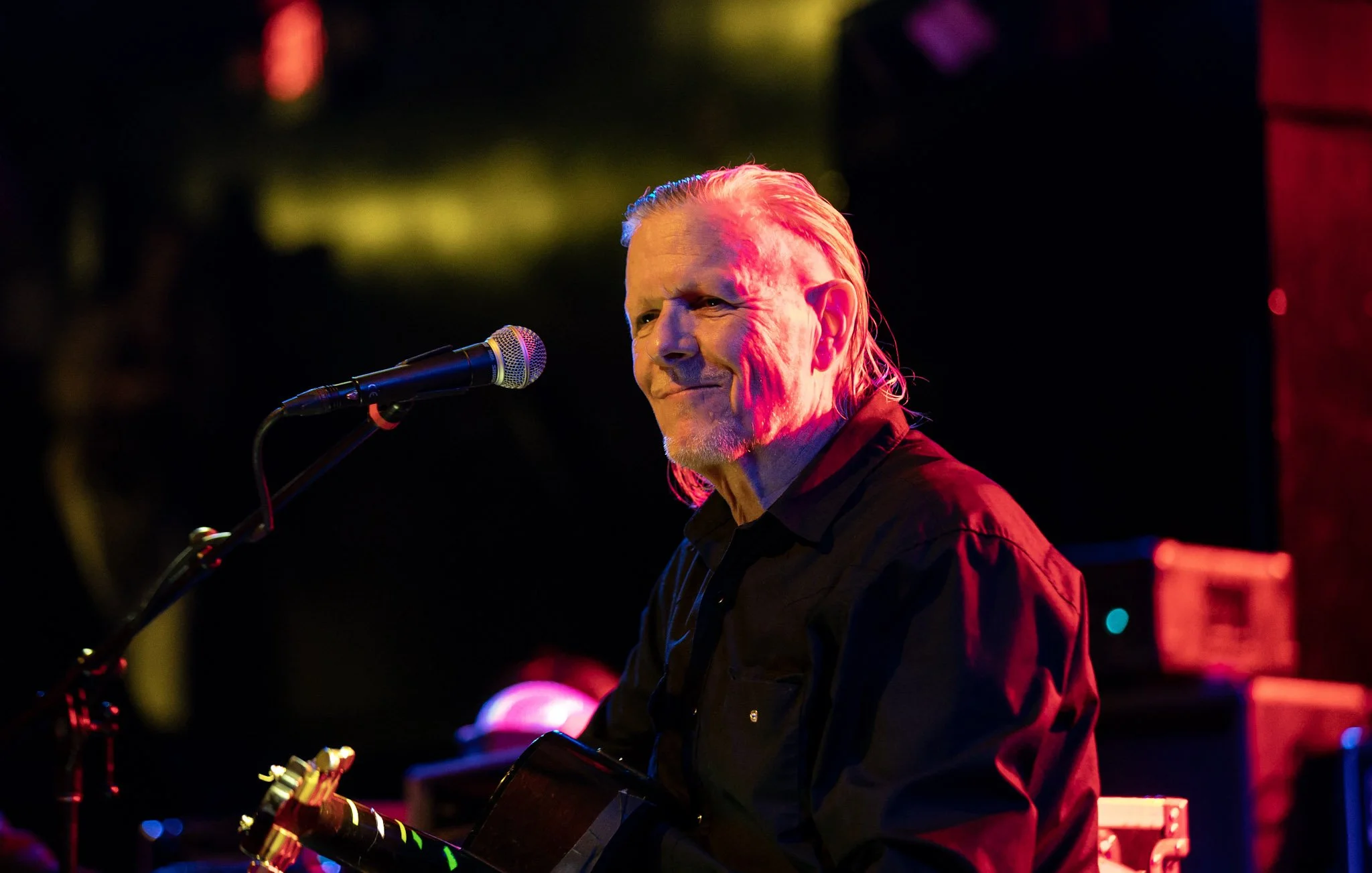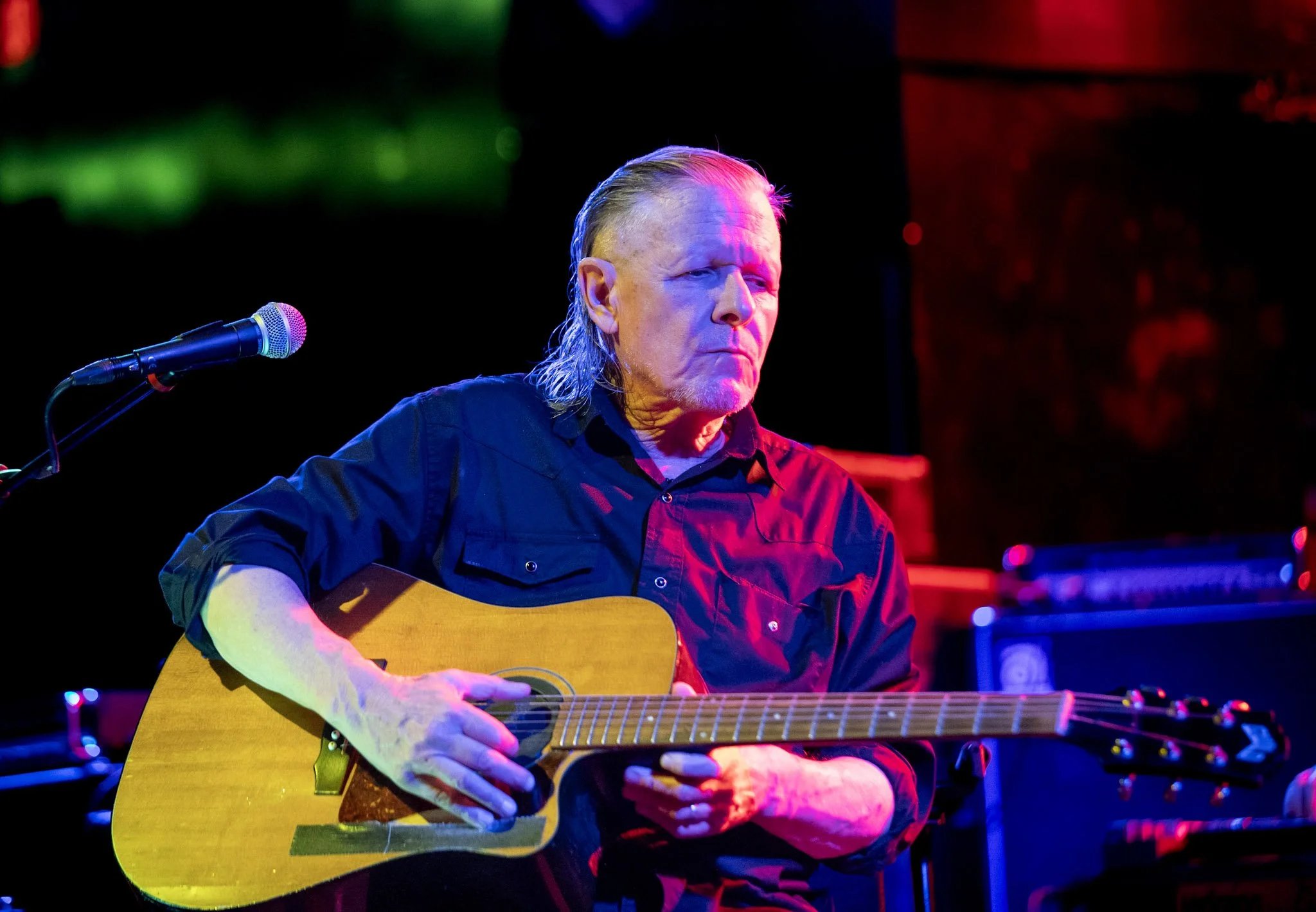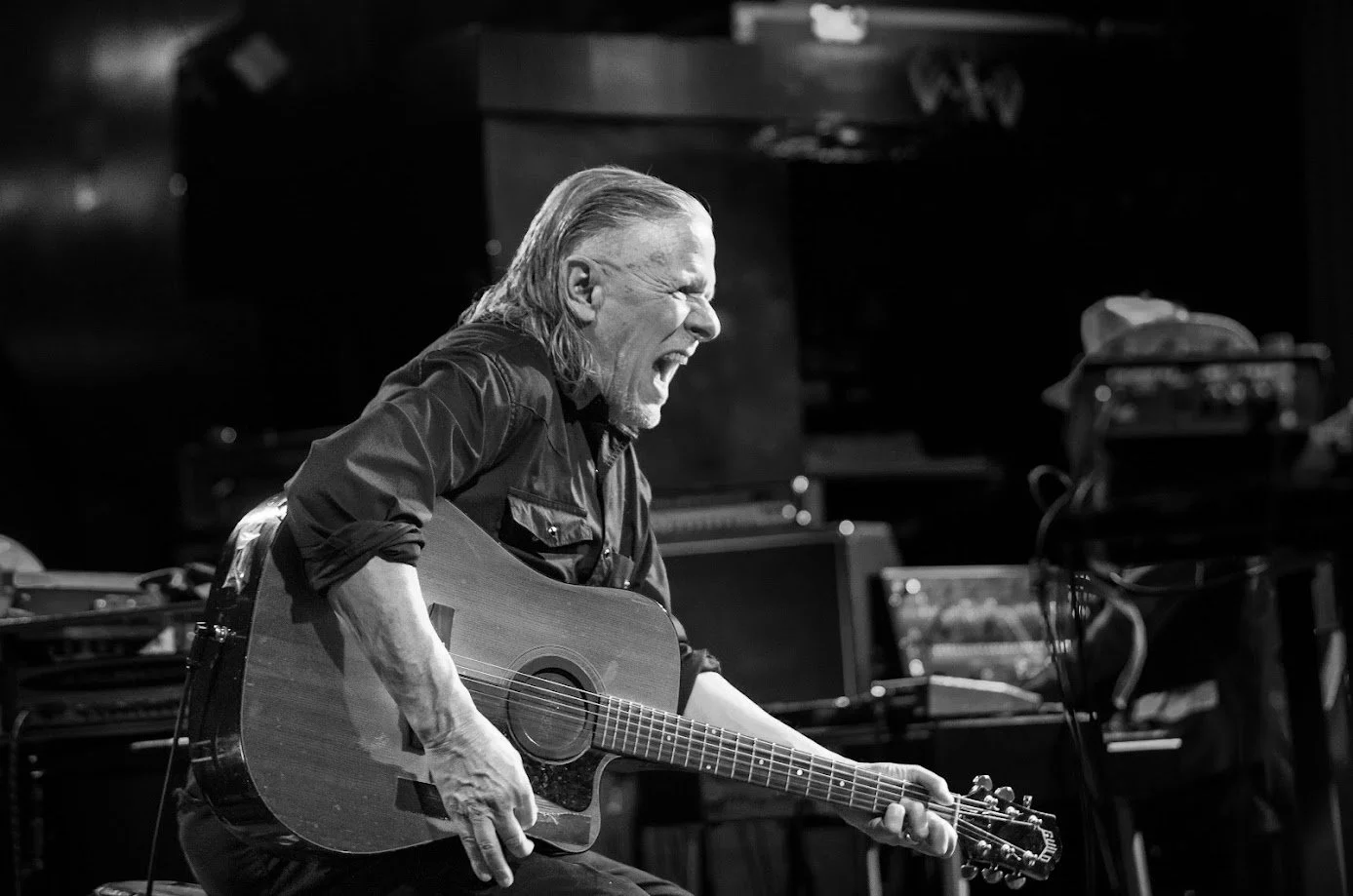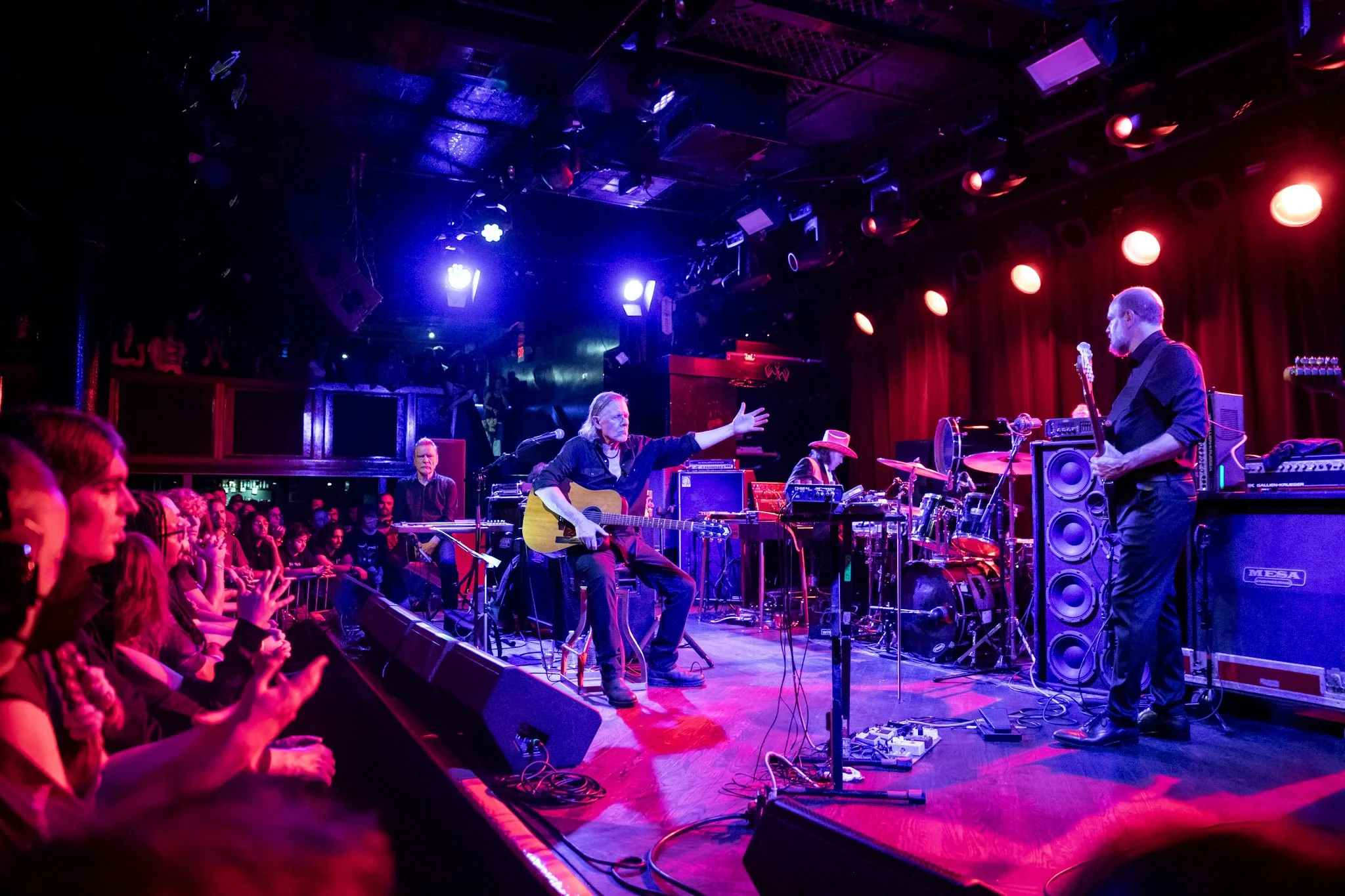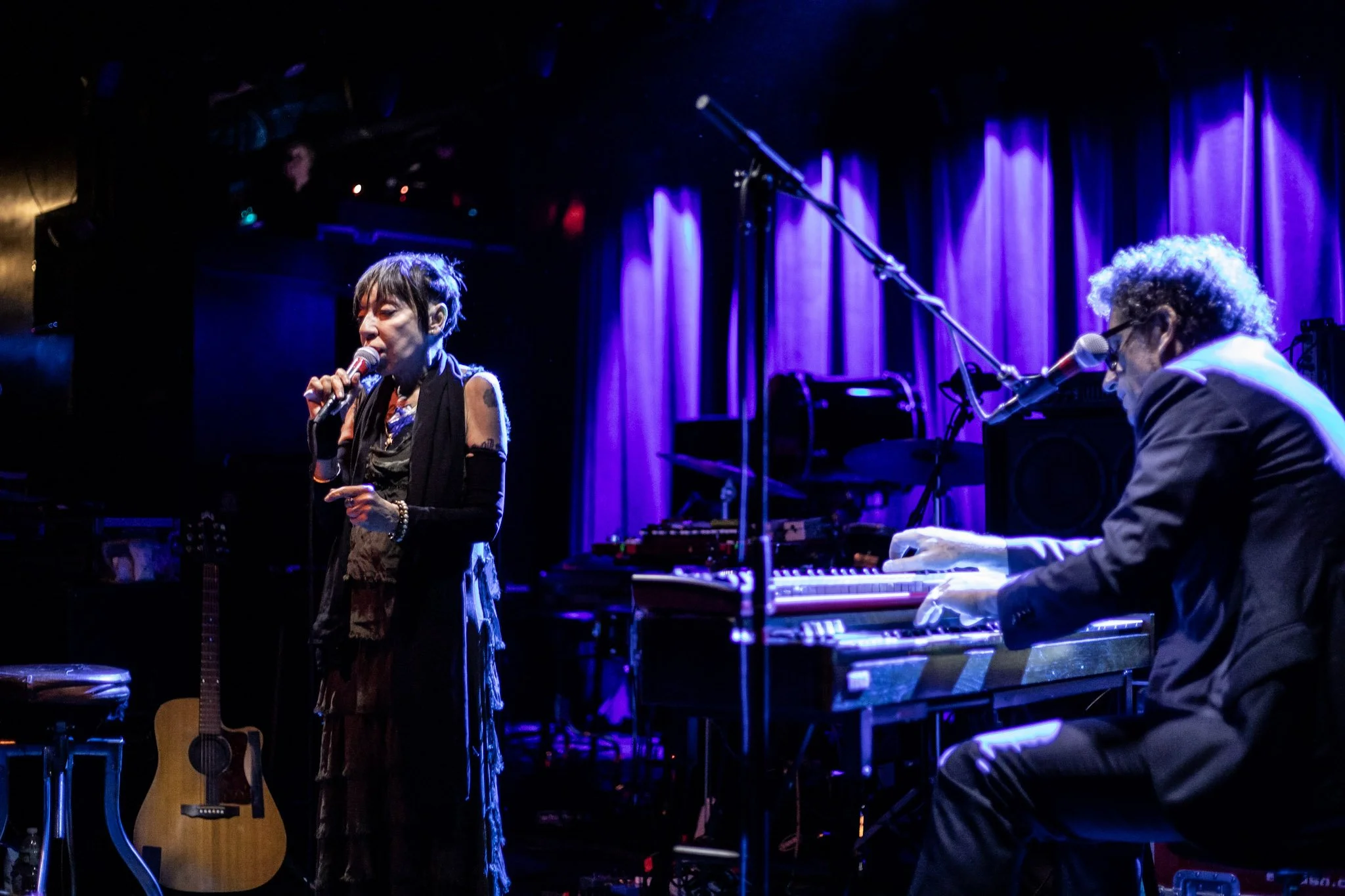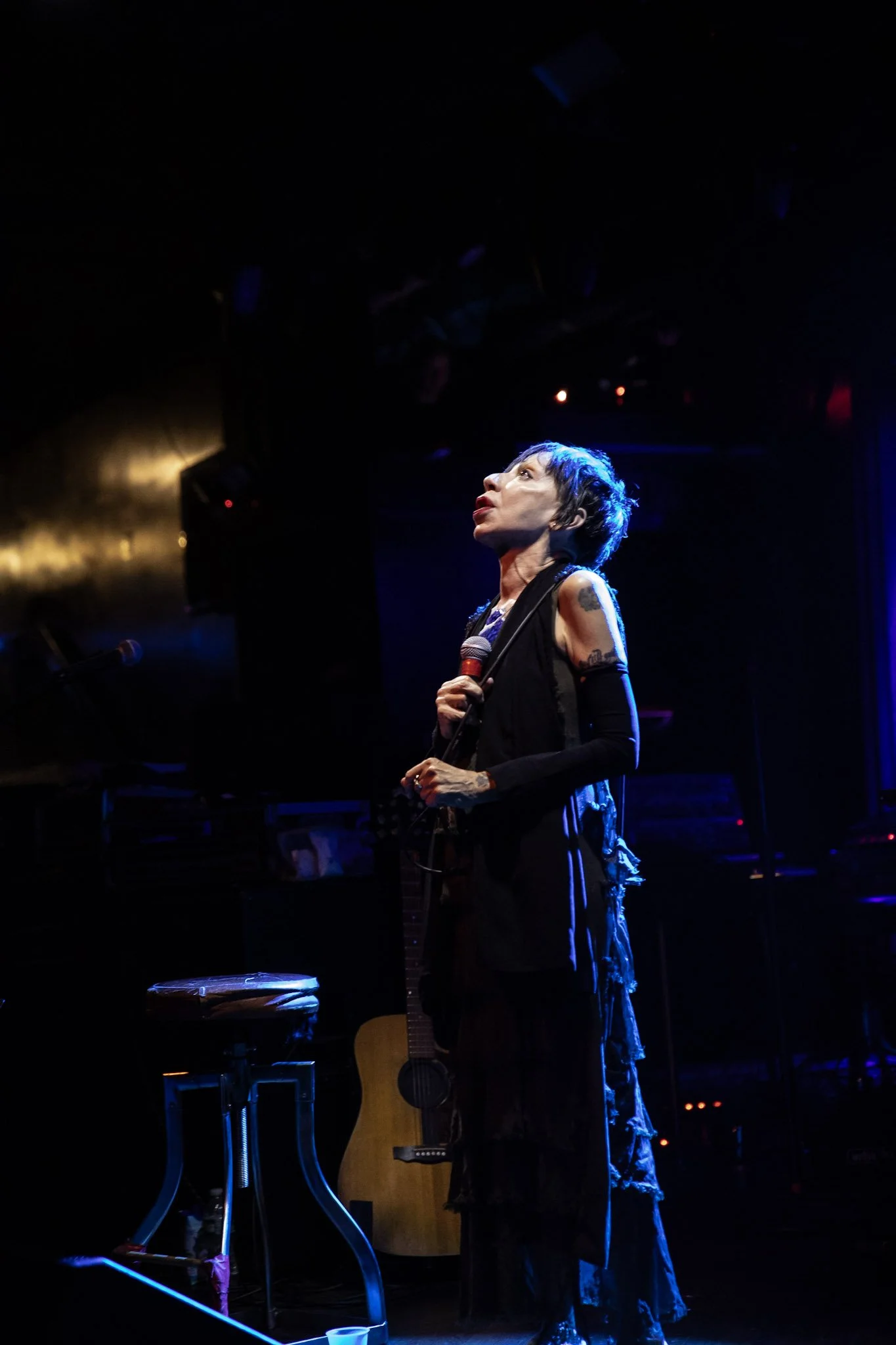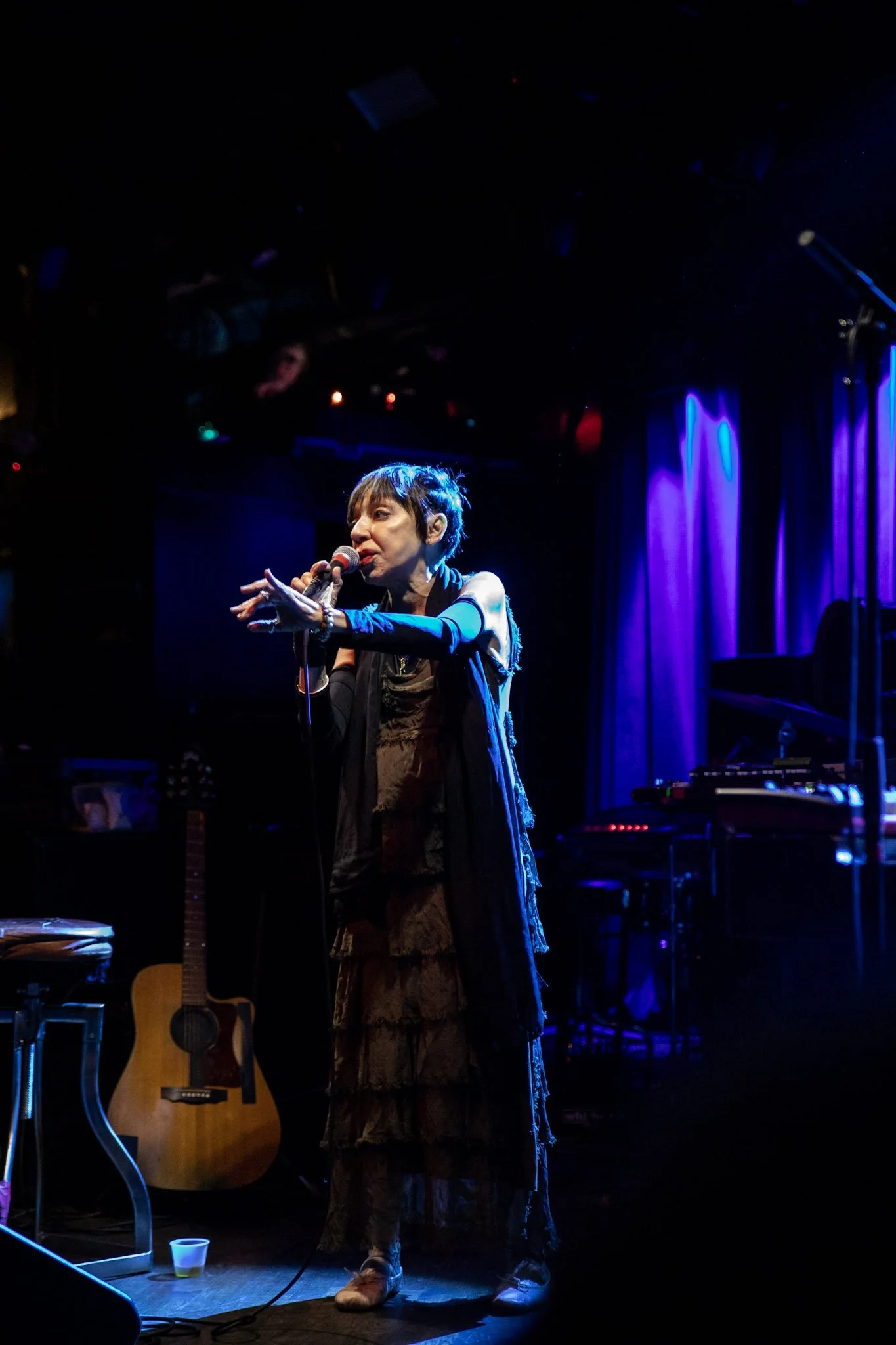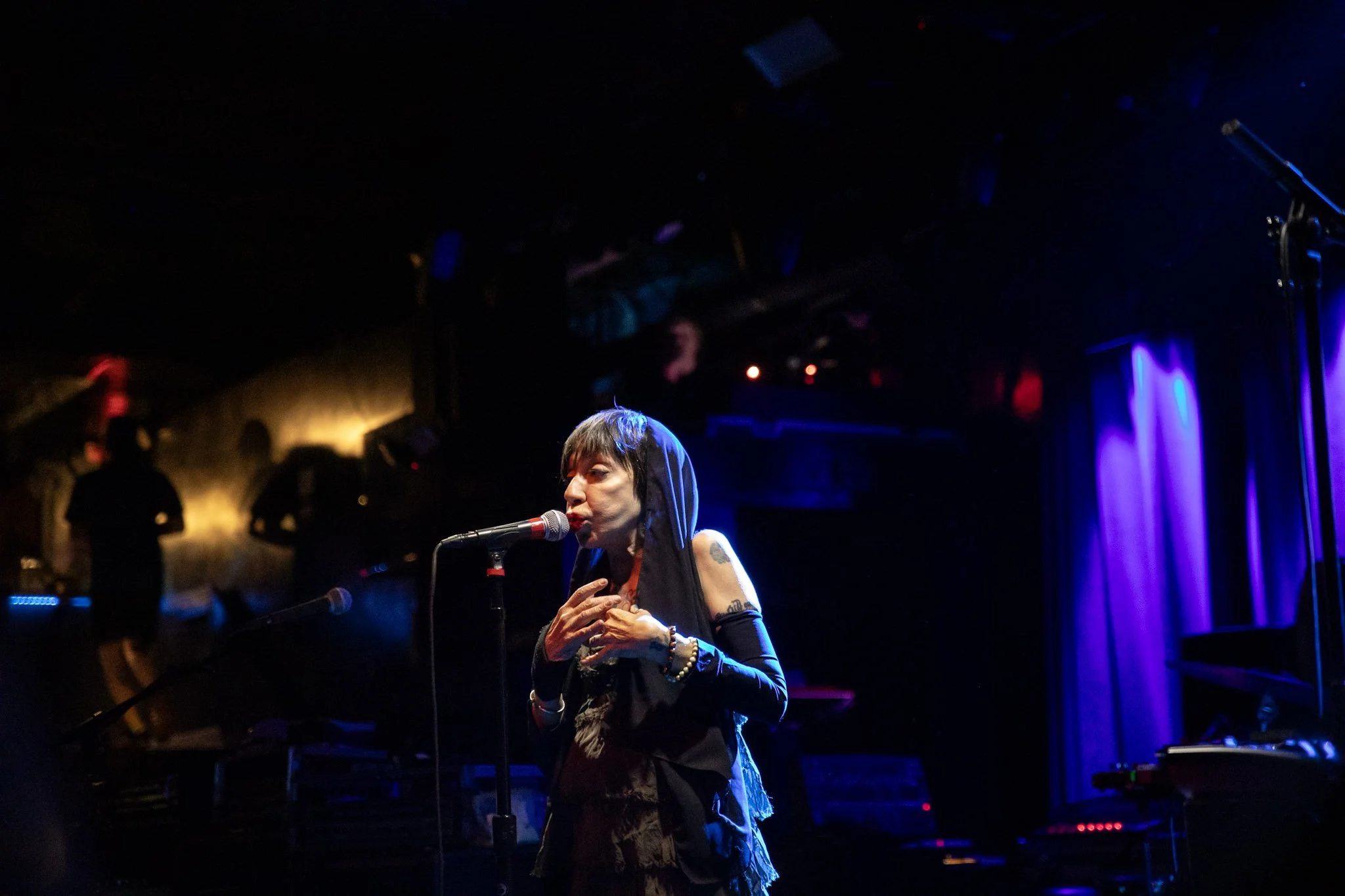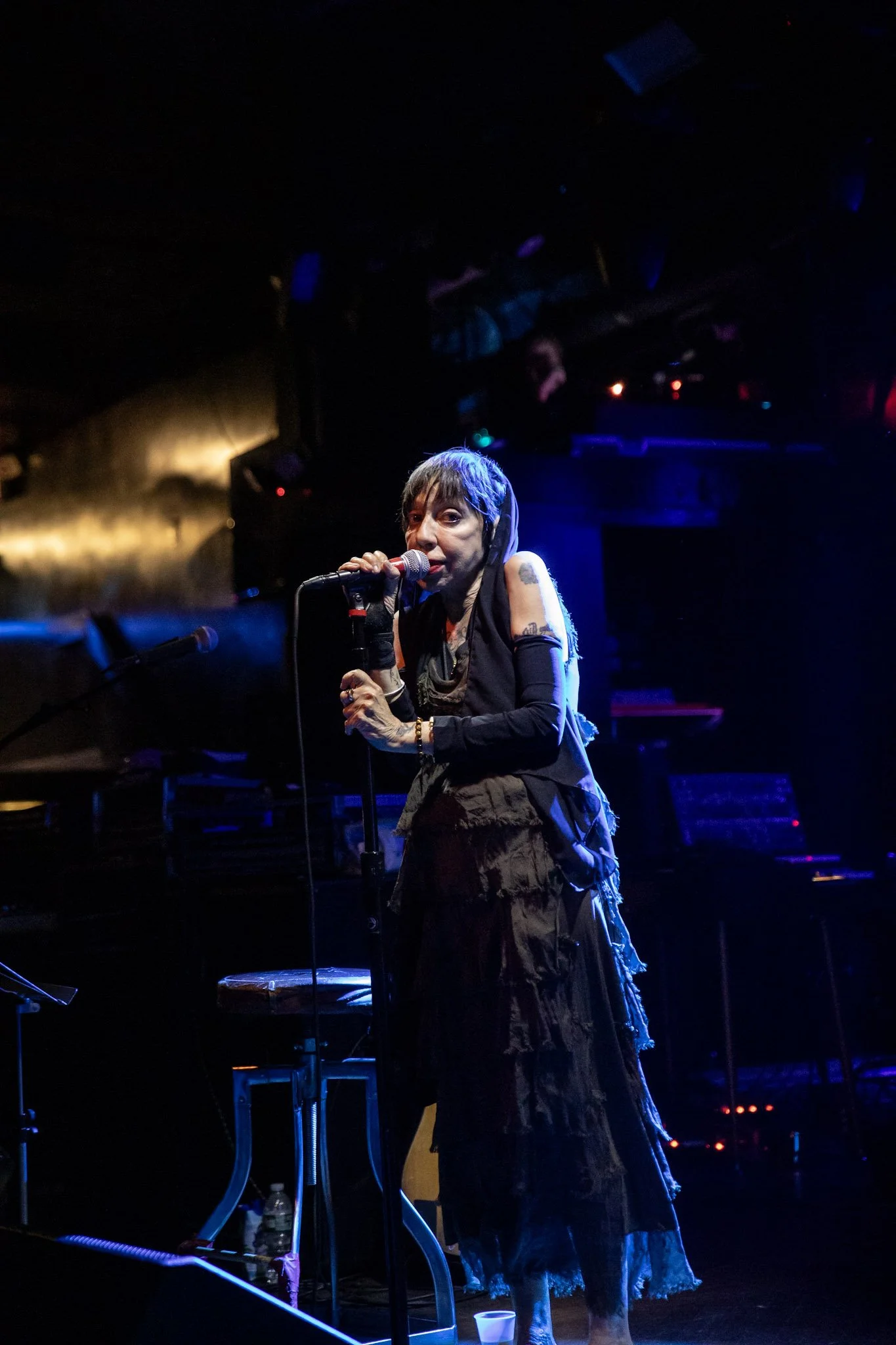SWANS
THE LATEST CHAPTER COMES TO A CLOSE
Paradise Rock Club, Boston - October 6, 2025
Story and Photography by JD Cohen
Swans band has been floating in and out of my consciousness ever since I first became aware of them in the late 1980’s. I knew of the band's cult status and the music critics' adoration through music reviews and writings about the band over the years. I started exploring some of their albums in the late 1990’s but never found a way into their challenging catalogue and I missed numerous opportunities to see the band perform live. That all changed on Monday night October 6, when I finally had a chance to see the band play at the Paradise Music Club in Boston.
This U.S. tour concluded the following night in Brooklyn, NY (the final leg will conclude in Europe) and marks the final chapter for the band’s current incarnation. The current band has been a stable core that has defined Swans since 2010. Although they are not disbanding, they will be concluding this current, larger-scale lineup. Michael Gira, the band's prolific and enigmatic founder and visionary, stated that the band will continue in a different, "much more stripped down" format after a transitional period, but the specific form it will take remains to be determined.
Although I was never a fan of the band, I was determined to experience Swans live and I knew this time around could be my last opportunity, certainly with this classic lineup. The band’s reputation for exciting live performances and their long history and influence on other important bands intrigued me. As I’ve gotten older I have also been gravitating toward and appreciating more challenging music. I was excited to finally see what all the fuss was about Swans and confident I would see something special. I had some vague expectations about the kind of music they would play but really no idea what to expect.
Formed around the uncompromising vision of Michael Gira in the early 1980s, Swans have existed at the extreme edges of rock and experimental music for decades. They began as a confrontational post-punk/industrial outfit, moved through dark and haunting experiments in melody and texture, disbanded with a near-mythic final album in the 1990s, and then — following an extended hiatus and the rise of Michael Gira’s Young God record label and other projects — reassembled in the 2010’s with a renewed focus on large-scale composition. That arc explains the band’s two essential states: the early, harsh and corrosive Swans sound and the later, cathedral-building, expansive Swans. Both are recognizably of a single mind — Gira’s — but both deploy different methods of expression.
The mid-1990s double-album Soundtracks for the Blind is often looked at as the band’s first great summation, conceived by Gira as a "final statement" before the initial breakup. Its sprawling, collage-like scope absorbs and processes the dense range of textures, themes, and sources the band had accumulated over the previous decade and a half. After the breakup, Gira’s intermittent solo and side projects kept the aesthetic thread alive until the band’s reformation around 2010. The post-reunion Swans produced leviathan records like The Seer and To Be Kind, which amplified their capacity for length, repetition, and emotional force.
This latest incarnation of the band is the one I was least familiar with so my perception of the band was much different from what I would experience on October 6th in Boston. What I would eventually hear on this night was monstrous cinematic soundscapes built on repetitive propulsive jams. It was certainly brutal in its weight, repetition and volume but it was never abrasive or lacking in musicality and traditional sound structure.
If you try to reduce Swans to a single musical principle, it would be dynamics — not just loud/soft in the ordinary sense, but scale, density, and the way sound occupies physical space. Swans weaponize volume and texture to produce physiological responses. Guitars, drums, bass, and multiple keyboards do not merely play notes; they push air like giant walls of sound closing in on you. The earliest Swans records present guitars as slabs of noise, vocal lines as incantations, and percussion as punitive machinery. Ultimately, that same emphasis on physicality has been harnessed into vast compositions that ebb and swell over long durations creating epic soundscapes more than aggressive noise. Dynamics in Swans are also psychological. Repetition creates a trance state, but that trance is always under duress: a chord repeats until it accrues meaning, or a drum pattern becomes a ritualized heartbeat that compels attention. It is music that demands surrender; it is definitely not background music in any way, it can not be dismissed.
During the live show it was fascinating to watch this play out in real time as a still and attentive crowd eventually would succumb to the force and repetition of the music and begin swaying and moving in unison. This didn’t happen right away, playing the same noise over and over the crowd relented, and began moving to the music. It happened to me several times throughout the evening. Listening and watching intently, I was periodically surprised to find myself without intention, awareness or forethought moving with the crowd in unison to the music, almost being pushed by the physical force of the music.
The band has been playing the same set list for most of the tour but what makes SWANS so special is that they have seemingly mastered the ability to combine improvisation with planned orchestration. Songs expand and change even as the basic structure remains constant. Each performance is a unique experience and songs can evolve and change through repetition over time. The power of the music comes from the collective. Though Gira is the undeniable center, Swans have always been collaborative. Over the years, lineups have included committed musicians whose contributions changed the band’s language: drummers who could deliver both pulverizing rhythm and subtle shimmer, guitarists who could generate both monolithic chords and fragile harmonics, singers whose voices spread new tonal possibilities. In live contexts, these musicians embody Gira’s vision while bringing idiosyncratic interpretations that keep the music fluid. In the middle of it all is Gira conducting and coaxing the musicians in this or that direction, emphasising one mood over another. A very cerebral, controlled and serious man, Gira comes alive on stage. Like a mad scientist at work, Gira seems to lose himself in his creations, screaming, dancing, gyrating and shaking to the music in a way that is completely incongruous with the very calculating and controlled person he seems to be off stage. The crowd respond to his cues like religious disciples with complete devotion to the music and its leader. Unlike any other concert I’ve attended, the music isn’t so much performed as much as it is created, brought to life in the moment, a physical thing created right before your eyes by Gira and his band.
A Swans show rarely follows the pop arc of peaks and immediate hooks. Instead, it builds patient, slow-burning arcs that often conclude in transcendent release. An initial thrill of the sheer power of the music quickly turns into discomfort that gradually gives way to awe. In the hot and sweaty confines of the sold out Paradise Rock club, at times it felt like a test of endurance punctuated by moments of exhilaration and euphoria. When it finally ended, you knew you had been through something, and all you wanted was to do it again.
Stepping out of the Paradise into the fresh air of a warm fall night in Boston I felt exhilarated — grateful, even — to still be so deeply moved and surprised by a rock concert. To witness something so wholly different, so commanding in its power, was inspiring. I can’t help but feel regret that I discovered Swans so late in their long career, and that I may never again see this particular incarnation of the band perform together. But there is comfort in knowing that Michael Gira remains an endlessly creative force, always reaching toward something new. Whatever form his next project takes, it’s certain to be interesting, bold and uncompromising — and this time, I won’t miss the opportunity to experiece it.
The Band
Michael Gira: Vocals, guitar Norman Westberg: Guitar Kristof Hahn: Guitar, lap steel Larry Mullins: Drums, electronics, percussion Phil Puleo: Drums, percussion Christopher Pravdica: Bass Dana Schechter: Bass, lap steel
Setlist
The End Of Forgetting 2. The Merge 3.Paradise Is Mine 4. Little Mind 5. A Little God In My Hands 6. Newly Sentient Being
Little Annie And Paul WalLfisch
Opening for Swans was Little Annie and former Swans keyboardist, Paul Wallfish (2016–2017, 2019). Little Annie (Ann Banes) performed a set of torch and cabaret style songs accopanied by Paull Wallfisch’s beautifally textured rythems. The duo performed a 40 minute set of original and cover songs including a woderful version of Lou Reed’s “Perfect Day”.
